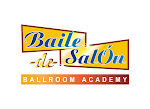For some reason, most of the basic (travelling) Salsa
concepts favour movement from a single direction. The lady’s left and man’s
right -- the movement for either gender may not necessarily be co-related.
I believe it is important for beginners to explore movement
from either side of the ‘line’ of dancing; especially men. Women do get the
opportunity to travel / turn across both sides, but generally movement for men
remains lop-sided. Consciously creating patterns from either side can help men
add at least 30% more variation to their partner-work and make them a lot more
unpredictable (hopefully).
There isn’t any content available on the internet -- either
via videos or literature -- on the Reverse Cross Body Lead (RCBL). Even in the classroom,
most instructors don’t specifically focus on the RCBL, unless it is built into
a pattern.
Here is an attempt to fundamentally break down the footwork
for the RCBL. Rather than keeping the footwork (for men) as a mirror image to
the Cross Body Lead (CBL), a variation has been attempted by yours truly.
How to:
For simplicity of understanding and execution, the RCBL is
almost a mirror image of the CBL.
Women’s Footwork:
(1,2,3): Regular back basic
5: Step forward with left foot
6: Step forward with right foot
7: Pivot 180 degrees over the right shoulder and end with
left foot next to the right
Men’s Footwork:
1: Step with left towards the lady (regular step)
2: Right foot shifts out to the left side (behind the left
leg or even surpassing it as the case may be)
3: Left foot moves next to right. Ensure you continue to face the lady; however, the
frame / feet do not create any obstruction for the lady
5: Step back with the right foot (tagging the lady for the
RCBL lead)
6: Shift the left foot (to the right) and attempt to get the
feet back in to the line of dancing
7: Pivot 180 degrees on the left foot as you slide the right
foot back (right foot finishes next to left)
This variation in footwork for men helps create a different
angle for the lead (less predictability), makes the movement sharper (adds
finesse), and assists in adding more push / pull variations (integrates
concepts better).
There isn’t much to tinker around with the women’s footwork,
considering the lead serves as a means to an end (execution).


